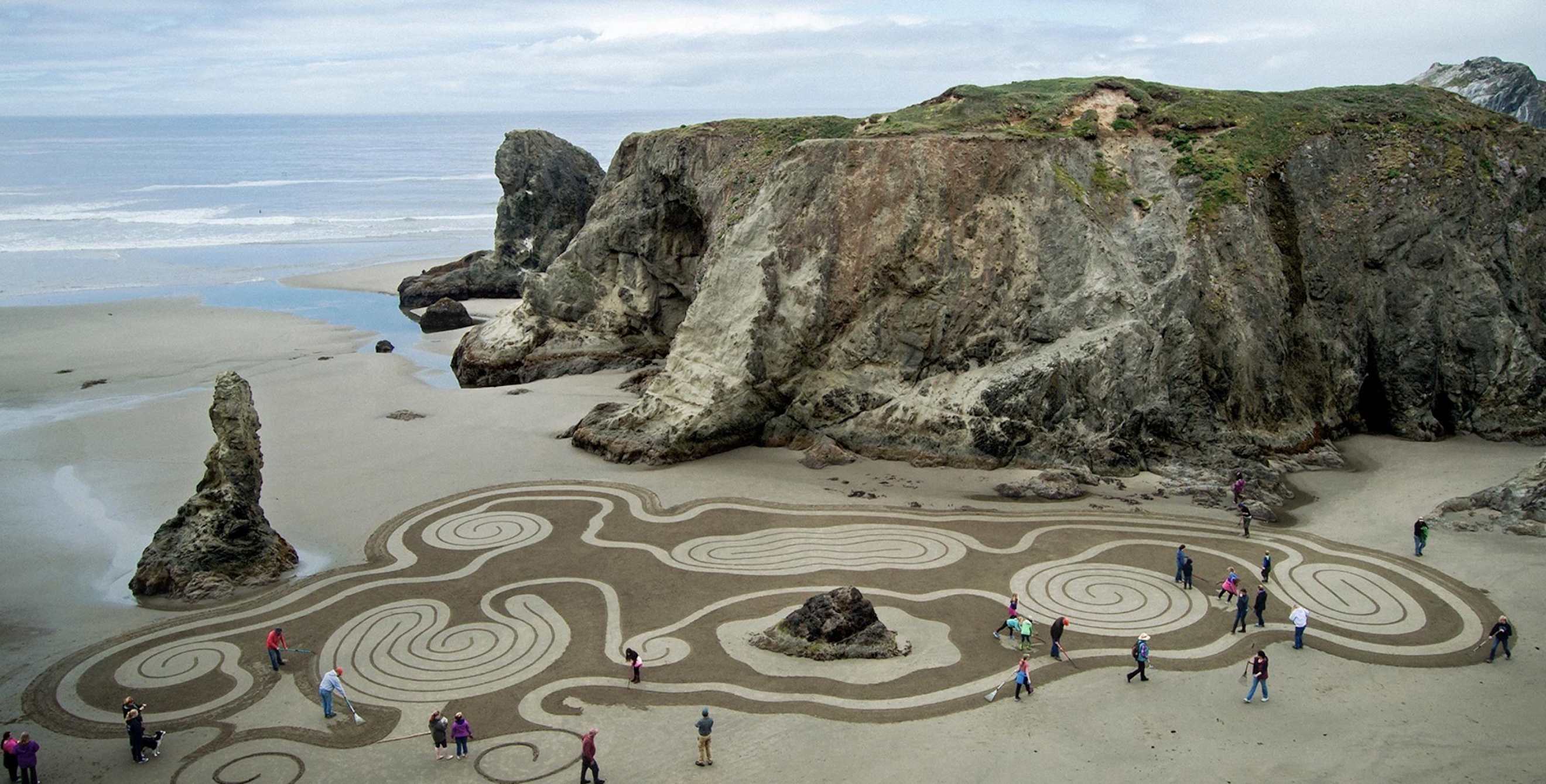
Denny Dyke's Walkable Art in Oregon
This virtuoso's canvas is the beach, his paintbrush a rake. You can experience his works firsthand.

Sand artist Denny Dyke draws crowds to Face Rock State Scenic Viewpoint in Bandon, Oregon, with labyrinths raked onto the beach. He estimates that 5,500 people walked the 65 spiral works he and his Circles in the Sand team created in 2016.
Why Make Labyrinths?
They're traditionally a meditation tool, among other uses. Walking one is a time to be quiet, a few moments when you don't have to worry about where you're going.
How is a Labyrinth Different from a Maze?
The goal in mazes is to find your way out. They build anxiety, frustration. A labyrinth, with its slow turns, is just the opposite—a single path to (and sometimes through) the center and back out. No dead ends. You walk to the center to get resolution and affirmation, then bring it back out into your life.
How Do You Create One?
After surveying the sand, I use a four-inch rake to start drawing. The detail designer follows my lead, the head groomer fills in voids, and up to eight guest groomers do shading to make the paths pop.
When Can I Walk a Labyrinth?
About every other week, I'll be drawing at Face Rock wayside. [See sandypathbandon.com for dates.] Visitors take about 15 minutes to walk the full labyrinth, which can be anywhere from a quarter to half a mile.
Is There a Larger Significance to Your Work?
The rock formations are important to the region's Coquille people. I like to feel that what I do is my ministry. We also create labyrinths for weddings, birthdays, and other functions.
How Do You Feel When Waves Wipe out the Art?
I'm excited when it happens. And people continue to walk them even after part washes away. I look at it this way: It's job security.
Get more out of your vacation: Book through AAA Travel for exclusive Member benefits.